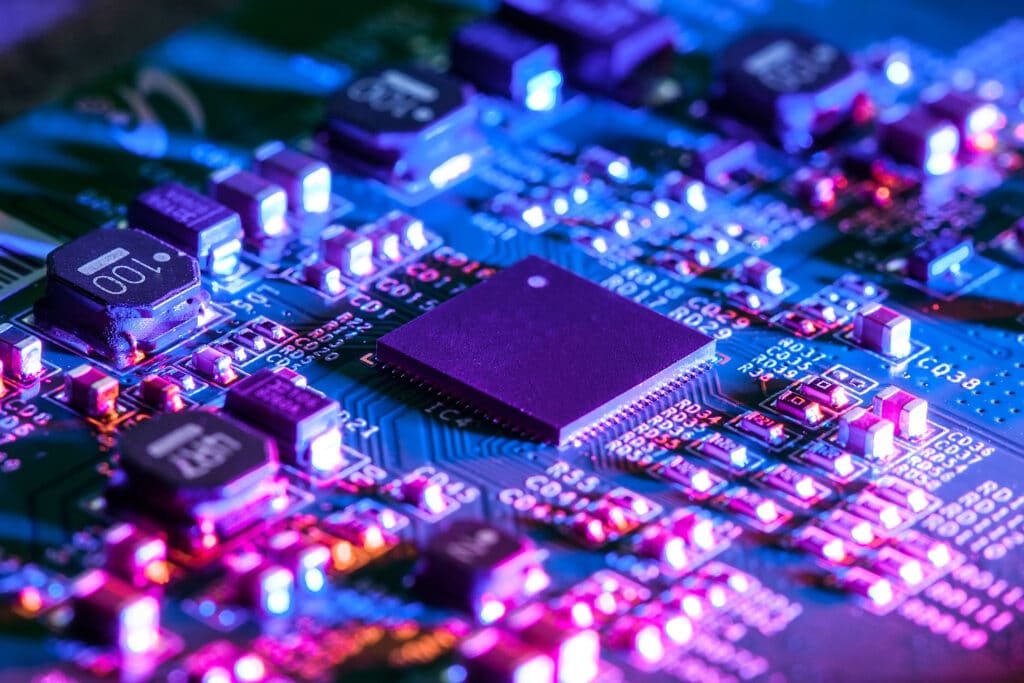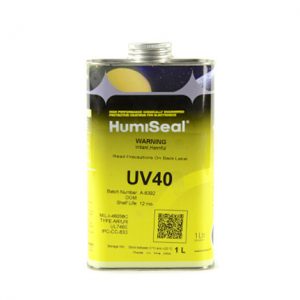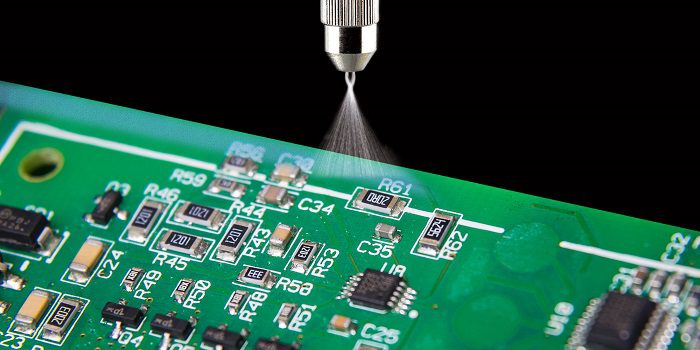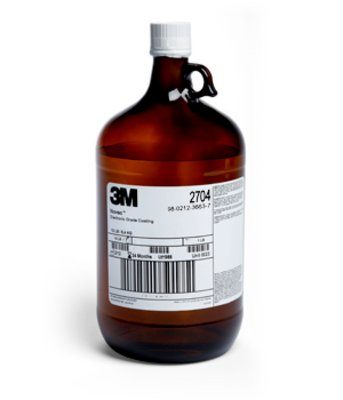Conformal coating for PCB protection
Newly manufactured and cleaned printed circuit boards will generally perform well electrically, but performance will quickly deteriorate due to adsorption of atmospheric moisture, contamination of the surface with airborne ionic material, electrostatic attraction of dust to the surface, condensation etc. To avoid these problems boards for more demanding and high specification applications are often conformally coated as the last stage of manufacture. Different from potting or low-pressure molding, conformal coating has the ability to protect the PCB with only a thin layer. Conformal coating has been used for electronics protecting in a wide range of industries thanks to its high performance and flexibility in application.


Discover completed information about Conformal coating solution here.
UV Conformal coating – What are the differences?


- Fast, on-demand cure: UV curable conformal coatings cure in seconds, as soon as it is exposed to UV light. They are easier to automate as a total process than other types of coating because they can offer a fast tack-free cure. There is no need to stack and temporarily protect the boards and then have them undergo additional cure.Although requiring initial investment in UV curing equipment, UV conformal coating is a method that reduces production time while increasing both productivity and product quality.
.
- UV curable technology also saves space on the manufacturing floor and increases cefficiency overall. There’s no need for explosion- proofing, as with solvent based coatings.
- One-part fomulas: There is no need for mixing, as with two-part epoxies. And fewer steps and fewer operators are typically required for each processing step. In addition, no extra shipping charges are required, as may be the case with hazardous materials.UV-curable materials can be both silicone-free and solvent free.
- Fluorescing grades availble for easy inspection
Search for Conformal coating products
UV conformal coatings are more durable than solvent based conformal coating
While solvent based conformal coating cures by the evaporation of the solvents seems that there will be considerable difficulties in controlling the curing process, UV curable conformal coating has a faster and more stable curing mechanism. When the coating is exposed to UV light, the photoinitiators in the coating absorb the energy from the light and undergo a chemical reaction. This reaction generates free radicals, which then react with the polymerizable resin to initiate crosslinking and form a hard, protective film. Cross-linking can produce significant property benefits in a polymer, among them:
- Improved thermomechanical properties.
- Higher service-use temperature.
- Improved dimensional stability.
- Inducement of heat memory in crystalline polymers.
- Lower permeability and improved chemical resistance.
- Reduced stress cracking.
- Overall improvement in physical toughness.
Solvent based conformal coating is formulated by dissolving the resin in other suitable solvents and additives to give different viscosity to suit different applications. The solvents then evaporate after conformal coating is applied on the surface, leave the surface material with only a continuous solid film coating. This process is usually called drying and there is no cross-linking reaction. Therefore, the UV curable conformal coating is proven to be more durable than solvent based conformal coating.
UV curable conformal coating in automotive industry
As the usage of electronics in automobiles increases, the protection of these electronics to assure reliable performance under very harsh environments is critical. Three general environments are well known in the automotive industry are: passenger compartment, under the hood and on or near the engine.
.


.
Temperature inside the car ranges from -40°C to 85°C and relative humidities can vary from near 0 to 100%. Water can condense on electronics surfaces and, combined with water-solube cintaminants, can cause momentary malfunctions and ultimately catastrophic failures. Generally, electronics inside the vehicle are not coated because of the sparsity of proven failures due to unprotected circuits and the added cost of coating. However, this situation is changing with the increasing use of sensors, advanced devices, PCBs having finer conductor lines and closer spacings, and the use of thin-film metallization—all of which are more susceptible to corrosion and transient electrical effects.
Even more severe environment exists on or near the engine where the temperatures may reach 125°C and where extremely rapid temperature changes occur. Even harsher environments occur near the exhaust manifold and catalytic converter where temperature reach 150ºC. In addition, the electronics may be exposed to corrosive materials including gasoline, motor oil, antifreeze, battery acid, brake fluid, and numerous road contaminants.
The coating materials with thermal stability and resistance to thermal cycles are extremely important for the protection of PCBs in such operating environments.
If you are an automotive manufacturer, the conformal coating material suggested below can help you solve your manufacturing problems and create a car with greater overall durability:
- Excellent thermal stability and chemical resistance, surface hardness, flexibility, and moisture resistance.
- Secondary moisture cure mechanism for curing in the non-UV exposed shadowed areas.
- Fluoresces under UV light to allow for coating inspection.
- Can be applied by selective coating equipment.
- Recognized under UL File Number E105698
- MIL-I-46058C qualified.
- IPC-CC-830
- RoHS directive 2015/863/EU
- China Standard GB30981-2020
- ISO 10993-5 certified product.
Discover other UV Conformal Coating products
Contact us for more consultant from experts in the Conformal Coating field:







